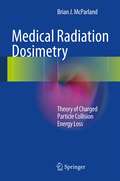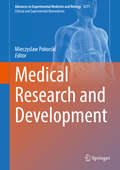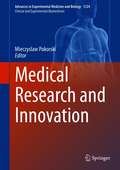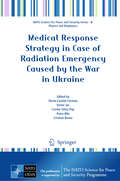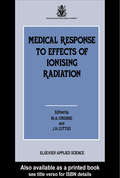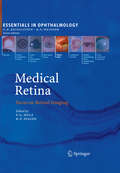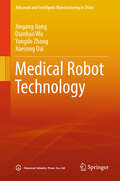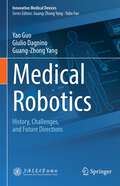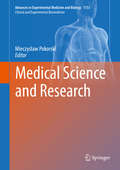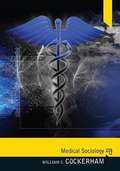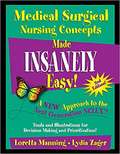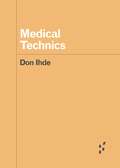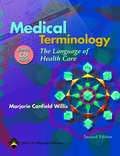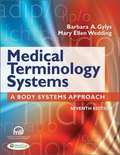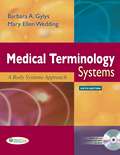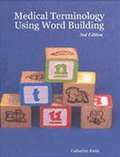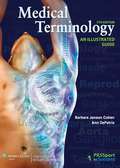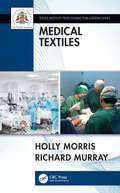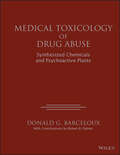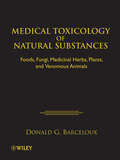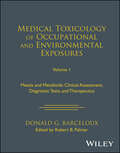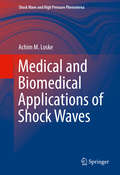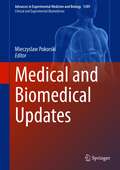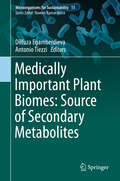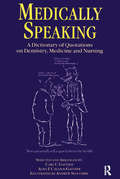- Table View
- List View
Medical Radiation Dosimetry
by Brian J McparlandAccurate radiation dosimetry is a requirement of radiation oncology, diagnostic radiology and nuclear medicine. It is necessary so as to satisfy the needs of patient safety, therapeutic and diagnostic optimisation, and retrospective epidemiological studies of the biological effects resulting from low absorbed doses of ionising radiation. The radiation absorbed dose received by the patient is the ultimate consequence of the transfer of kinetic energy through collisions between energetic charged particles and atoms of the tissue being traversed. Thus, the ability of the medical physicist to both measure and calculate accurately patient dosimetry demands a deep understanding of the physics of charged particle interactions with matter. Interestingly, the physics of charged particle energy loss has an almost exclusively theoretical basis, thus necessitating an advanced theoretical understanding of the subject in order to apply it appropriately to the clinical regime. Each year, about one-third of the world's population is exposed to ionising radiation as a consequence of diagnostic or therapeutic medical practice. The optimisation of the resulting radiation absorbed dose received by the patient and the clinical outcome sought, whether diagnostic or therapeutic, demands accuracy in the evaluation of the radiation absorbed doses resulting from such exposures. This requirement arrises primarily from two broadly-encompassing factors: The requirement in radiation oncology for a 5% or less uncertainty in the calculation and measurement of absorbed dose so as to optimise the therapeutic ratio of the probabilities of tumour control and normal tissue complications; and The establishment and further refinement of dose reference levels used in diagnostic radiology and nuclear medicine to minimise the amount of absorbed dose for a required degree of diagnostic benefit. The radiation absorbed dose is the outcome of energetic charged particles decelerating and transferring their kinetic energy to tissue. The calculation of this energy deposition, characterised by the stopping power, is unique in that it is derived entirely from theoretical principles. This dominant role of the associated theory makes its understanding of fundamental to the calculation of the radiation absorbed dose to the patient. The theoretical development of charged particle energy loss recognised in medical physics textbooks is in general limited to basic derivations based upon classical theory, generally a simplified form of the Bohr theory. More advanced descriptions of, for example, the Bethe-Bloch quantum result usually do not go beyond the simple presentation of the result without full explanation of the theoretical development of the theory and consideration of its limitations, its dependencies upon the Born perturbation theory and the various correction factors needed to correct for the failures of that Born theory at higher orders. This is not appropriate for a full understanding of the theory that its importance deserves. The medical radiation physicist should be aware of the details of the theoretical derivations of charged particle energy loss in order to appreciate the levels of accuracy in tabular data provided in reports and the calculation methodologies used in modern Monte Carlo calculations of radiation dosimetry.
Medical Research and Development (Advances in Experimental Medicine and Biology #1271)
by Mieczyslaw PokorskiThis book shares the experimental findings and views in current multidisciplinary medical science combining both basic and applied research aimed at resolving problematic health issues. The key topics address contagious diseases, in particular the epidemiology, clinical presentation, and management of influenza and influenza-like infections as well as brain tuberculosis. Pulmonary medicine is represented by articles addressing a range of practical issues, including the diagnosis, symptoms, comorbidities, and treatment of obstructive sleep apnea, a syndrome whose incidence shows a persistent upward trend worldwide. Other articles address the pathogenesis of air pollution toxicity and allergy and sensory irritation in toxic exposure studies. An intriguing relation of atopic dermatitis to depression and serotoninergic system is debated. The book attempts to integrate research into clinical work and to implement findings to improve care and to decrease suffering from diseases. It is dedicated to the practicing professionals, researchers, and all engaged in health care.
Medical Research and Innovation (Advances in Experimental Medicine and Biology #1324)
by Mieczyslaw PokorskiThis volume is dedicated to multidisciplinary research at the interface between basic biomedicine and clinical practice. This book guides best practice in the diagnosis and therapy while dealing with difficult-to-treat disorders of yet unclear etiology. Chapters address such disorders as granulomatosis with polyangiitis causing autoimmune-related multiorgan inflammation of blood vessels, increasingly widespread allergy to peanuts, occupational exposure to zinc oxide, and immunogenic responses to pneumococcal and influenza vaccination underlying their preventive effectiveness. Other hot issues deal with the proper use of fluid therapy in the perioperative period and a cognitive decline in lung transplant patients. A new physiotherapeutic approach of treating key myofascial trigger points in low-back pain appears highly beneficial in reducing patients’ disability, advancing physiotherapy of this overwhelming condition. Finally, other chapters consider ways to streamline medical management to increase the number of physicians and their availability for patients, a particularly sensitive issue in the current COVID-19 pandemic. The dissemination of clinical knowledge about high-risk and hardly controllable conditions is an inalienable part of progress in medical practice. The book is a resource for clinical specialists, general practitioners, and allied healthcare professionals.
Medical Response Strategy in Case of Radiation Emergency Caused by the War in Ukraine (NATO Science for Peace and Security Series B: Physics and Biophysics)
by Florin-Catalin Cirstoiu Victor Juc Corina Silvia Pop Petre Min Cristian BarnaThis book addresses a potential radiation incident caused by the war in Ukraine, from an interdisciplinary approach of medical, nuclear safety and security, nuclear research, geostrategic and population’s resilience perspectives. The book also address the key role played by NATO in identifying new solutions for stabilizing the region, while also focusing on the emergency preparedness in order to ensure that adequate capabilities and capacity are in place which can be mobilized in response to a radiation emergency.Russia's military invasion in Ukraine is considered the most serious security crisis in Central and Eastern Europe since the end of the Cold War, with major implications for the regional security environment and NATO. Since the very beginning of Russia's illegal military invasion in Ukraine the Heads of State and Government of the member countries of the North Atlantic Alliance condemned the invasion and demand that Russia should stop and withdraw its forces from Ukraine, being deeply concerned that the violence and insecurity in the region caused by Russia are determining a critical humanitarian situation and material destruction all over Ukraine.Moreover, after invading Ukraine, Russian army took control of the Zaporizhzhia nuclear power plant, in early March, 2022. Since then, Russian military units guard the facility and, after Russian President Vladimir Putin annexed up to 18% of Ukraine, including the area where the nuclear plant is located, he signed a decree to formalize Russian control over the plant.
Medical Response to Effects of Ionizing Radiation
by W. A. Crosbie J. H. GittusProceedings of a Conference on Medical Response to Effects of Ionizing Radiation held at Queen Elizabeth II Conference Centre, London, UK, 28-30 June 1989.
Medical Retina
by Frank G Holz Richard F. SpaideRecent advances in ophthalmic imaging technology have revolutionized fundus examination and contributed significantly in elucidating the pathophysiology of retinal diseases and improving their diagnosis and treatment. It is therefore fitting that this detailed full-color textbook in the Medical Retina series is devoted to ocular imaging. The volume reviews in detail the role of both established and novel forms of imaging, and is designed to be of benefit to clinicians and researchers alike. All of the chapters have been written by internationally recognized experts at the forefront of their fields. The result is a comprehensive, state-of-the-art overview of retinal imaging that should prove informative and useful for everyone interested in the retina. Topics include: *Spectral domain optical coherence tomography (SD-OCT) of macular diseases *Comparison of OCT equipment *Simultaneous SD-OCT and confocal SLO imaging *Ultra-widefield imaging °Autofluorescence imaging *Near-infrared imaging *Macular pigment imaging *Metabolic mapping *Imaging of the choroid *Imaging the vitreous and the vitreoretinal interface with SD-OCT *New developments in OCT technology *Molecular imaging
Medical Robot Technology (Advanced and Intelligent Manufacturing in China)
by Jingang Jiang Dianhao Wu Yongde Zhang Xuesong DaiThis book mainly describes the basic principles, basic knowledge and application of medical robots. The book includes the characteristics and classification of the medical robot, the key technology of medical robot and the engineering research of clinical application of medical robot. While expounding the basic principles and knowledge, this book pays attention to its clinical application research. From the research background, research significance, key technologies and typical examples, hospital service robot, neurosurgery robot, vascular intervention robots, laparoscopic robot, capsule robot, prostate minimally invasive interventional robot and breast minimally invasive interventional robot, orthopedic robot, rehabilitation robot, complete denture tooth-arrangement robot, orthodontic archwire bending robot and other medical robots are analyzed and described. On this basis, the development of medical robots is analyzed from the perspectives of policies and regulations, market, industry chain structure and technology. This book is suitable for researchers, senior undergraduate students and postgraduate students and industry practicing engineers in medical robots and biomedical engineering to consolidate the basic principles and knowledge and learn about the industry frontiers. And it also is suitable for clinicians to understand relevant engineering practices.
Medical Robotics: History, Challenges, and Future Directions (Innovative Medical Devices)
by Guang-Zhong Yang Yao Guo Giulio DagninoThis book outlines the global trends and new research directions of medical robotics, while also highlighting associated technical, commercial, regulatory, and economic challenges. In particular, it focuses on three areas of medical robotics: (i) robotic surgery, (ii) rehabilitation and personal assistance, and (iii) hospital automation. With improved safety, efficacy and reduced costs, robotic platforms will soon approach a tipping point, moving beyond early adopters to become part of the mainstream clinical practice, defining the future of smart hospitals and home-based patient care. This book provides an up-to-date, concise, focused, and effective overview of medical robotics, making the content suitable for readers with different technical backgrounds, including bioengineering, robotics, computer science, as well as clinical professionals. The clarity of the exposure of complex topics in simple way makes the book a unique resource for both experienced professionals and novices who approach medical robotics. As a reference for medical robot research, readers can select some chapters according to their own interests.
Medical Science and Research (Advances in Experimental Medicine and Biology #1153)
by Mieczyslaw PokorskiThis book shares the latest research and practice-oriented findings in medical sciences with a wide audience. It addresses a range of contemporary issues, often unresolved or contentious, across various medical fields, including advances in the management of hemorrhagic brain stroke. It also discusses metastatic renal cell carcinoma – a global scourge with an extremely poor long-term survival prognosis, the course and sequelae of renal cell carcinoma, as well as advances in targeted molecular therapy with sunitinib, a receptor tyrosine kinase inhibitor. Further, it examines the molecular targeting of proliferative signaling of the epidermal growth factor receptor in the first-line treatment of patients with metastatic non-small-cell lung cancer. Other articles cover clearance of toxins in hemodialyzed patients; the search for diagnostic and therapeutic markers in the connective tissue disease scleroderma; obesity linked to inappropriate dietary habit; clinical problems related to the diagnosis of sensitization to fungi and its role in asthma; and reasons for the perilous trend of avoiding basic vaccinations in children. Lastly, the book explores the rapid developments in e-health technologies that increase access to health services, particularly for the elderly. The book is intended for clinical specialists, researchers, and all allied health professionals from various fields.
Medical Sociology (12th edition)
by William C. CockerhamFor upper-division undergraduate/beginning graduate-level courses in Medical Sociology, and for Behavioral Science courses in schools of Public Health, Medicine, Pharmacy, and Nursing. Offers a comprehensive overview of the most current issues in medical sociology. The standard text in the field, this best-selling introduction to medical sociology presents the most recent and relevant ideas, concepts, themes, issues, debates, and research findings. It contains first-person accounts from patients, physicians, and other health care providers. It is based on a worldwide review of the literature and provides the most recent health statistics, data, and studies available while identifying the most important trends and issues.
Medical Surgical Nursing Concepts Made Insanely Easy!
by I Can PublishingThis book has been written to combine the world of medical diagnoses, the human body's systems and the pathophysiology that occurs with complications to the system with the national accrediting organizations' standards and to connect these with nursing concepts based on practice standards. In order to facilitate the transfer of large amounts of information to the long-term memory, cognitive learning theory has been incorporated throughout the book through the use of mnemonics, songs, jingles, etc.
Medical Technics (Forerunners: Ideas First)
by Don IhdeA personal account of the aging body and advanced technologies by a preeminent philosopher of technologyMedical Technics is a rigorous examination of how medical progress has modified our worlds and contributed to a virtual revolution in longevity. Don Ihde offers a unique autobiographical tour of medical events experienced in a decade, beginning in his 70s. Ihde offers experiential and postphenomenological analyses of technologies such as sonography and microsurgery, and ultimately asks what it means to increasingly become a cyborg. Forerunners: Ideas FirstShort books of thought-in-process scholarship, where intense analysis, questioning, and speculation take the lead
Medical Terminology (Second Edition): The Language of Healthcare
by Marjorie Canfield WillisMedical Terminology The Language of Health Care
Medical Terminology Systems 7th Edition
by Barbara A. Gylys Mary Ellen WeddingA word building and body systems approach to learning medical terminology. You’ll begin by learning the parts of words—roots, combining forms, suffixes, and prefixes. Then, use your understanding of word parts to learn medical terminology. Mnemonic devices and engaging, interactive activities make word-building fun and easy, ensuring you retain the information you need for success.
Medical Terminology Systems: A Body Systems Approach (6th edition)
by Barbara A. Gylys Mary Ellen WeddingThe book includes: A CLEAR, CONCISE PRESENTATION using the classic word-building and body systems approach to learning, CHAPTER OUTLINES to orient students to each chapter’s content, HOW DOES WORD BUILDING WORK? it begins with the basics, KEY TERMS highlighted in the beginning of each chapter, and ABBREVIATIONS for common terms.
Medical Terminology Using Word Building
by Catherine KurtzThis is a great course for beginners, the experienced, and everyone in between! This course teaches what we call Word Building, which is the knowledge of how all medical words are structured. It's a quick, efficient and amazingly easy way for anyone to learn medical terminology. You learn how to recognize the meaning of a medical term by dividing the word into its three basic component parts: the prefix, root and suffix. By knowing the meanings of the prefixes, suffixes, and root words, you can easily make sense of a medical term. This course is designed for the healthcare claims biller, the medical insurance claims adjuster, the medical office worker, or anyone wanting to learn medical terminology. The course takes the average person 3 weeks or less to complete based on a study time of 1-2 hours per day.
Medical Terminology,7th Edition,An Illustrated Guide
by Barbara Janson Cohen Ann DepetrisMedical Terminology: An Illustrated Guide, 7e by Barbara Janson Cohen uses a stepwise approach to learning medical terminology. Part 1 describes how medical terms are built from word parts; Part 2 introduces body structures, diseases, and treatments; and Part 3 describes each body system. Individual chapters also build on knowledge in stages: the Key Terms sections list the terms most commonly used; more specialized terms are included in a later section entitled “Supplementary Terms.”<P> The current edition includes a robust student ancillary package delivered under the PASSport to Success brand, with assessment exercises, chapter quizzes, and searchable text online, and a complete suite of instructor resources. The addition of PrepU as a packaging option provides a powerful value to students - the online study experience helps them to understand and retain course information and helps instructors to better assess what their students may be struggling with.
Medical Textiles (Textile Institute Professional Publications)
by Holly Morris Richard MurrayThis textbook aims to ensure that advances in medical textiles are addressed and that recent developments are able to be appreciated and understood not only by medical practitioners and healthcare personnel but also by textile scientists and technologists. The idea is to stimulate collaborative research and development in the field of medical textiles and to equip researchers with an understanding of the steps they need to take to ensure that their efforts, be they to develop new devices for implantation or items for external application, are carried out in such a way as to improve their effectiveness and enhance the prospects for their implementation. Attention is drawn to the need to improve outcomes in the practical setting and to guidance on the detailed planning required prior to engaging in experimental work. Standard tests can help researchers to monitor performance, but for some important applications such as those required to demonstrate antimicrobial and fluid-repellent performance in most items of protective wear, standard tests consistently fall seriously short in terms of predicting how well they might work in the practical setting. Guidance is therefore given for their further development. Chapters within the textbook cover: The history of innovation within medical textiles with particular attention given to key concepts of the latter part of the 19th Century and subsequent associated developments. Textile and polymer science underpinning fibres, fabrics, nano-fibre technology and the functional finishes that can be applied to enhance the performance of medical textile products. Woven, knitted, nonwoven and braided fabrics and the key performance characteristics of each fabric type which make them particularly suited to specific medical textile roles such as mesh, grafts, filtration and scaffolds for tissue engineering. Implantable medical textiles, non-implantable medical textiles, health and hygiene products and extracorporeal devices that use textile products. Legislative requirements for medical devices. The design of experiments and suitability for purpose of textile test methods. Case studies to illustrate how medical textiles are applied in practice. The book provides essential reading for textile professionals, biomedical engineers, and others involved in the research, design and engineering of medical and healthcare appliances, and for those employed in the medical profession wishing to gain new insights into the wealth of materials at their disposal.
Medical Toxicology of Drugs Abuse
by Donald G. BarcelouxThis book provides a broad reference covering important drugs of abuse including amphetamines, opiates, and steroids. It also covers psychoactive plants such as caffeine, peyote, and psilocybin. It provides chemical structures, analytical methods, clinical features, and treatments of these drugs of abuse, serving as a highly useful, in-depth supplement to a general medical toxicology book. The style allows for the easy application of the contents to searchable databases and other electronic products, making this an essential resource for practitioners in medical toxicology, industrial hygiene, occupational medicine, pharmaceuticals, environmental organizations, pathology, and related fields.
Medical Toxicology of Natural Substances
by Donald G. BarcelouxInterest and information in the field of medical toxicology has grown rapidly, but there has never been a concise, authoritative reference focused on the subjects of natural substances, chemical and physical toxins, drugs of abuse, and pharmaceutical overdoses. Medical Toxicology of Natural Substances finally gives you an easily accessible resource for vital toxicological information on foods, plants, and animals in key areas in the natural environment.
Medical Toxicology of Occupational and Environmental Exposures: Metals and Metalloids: Clinical Assessment, Diagnostic Tests, and Therapeutics
by Donald G. BarcelouxMedical Toxicology of Occupational and Environmental Exposures is the only reference which comprehensively covers the clinical, analytical, and monitoring information needed by clinicians, students and investigators with interests in metals, radiation, and cancer. The information in all chapters is presented in a cogent, standardized format which greatly simplifies the use of the text as a reference. Reviewed by a distinguished panel of well-known toxicology experts, the information is critically evaluated and authoritative. The interdisciplinary, evidence-based approach is designed to reach beyond clinical settings to increase the scientific understanding of those in associated fields (analytical laboratories, universities, federal and state regulatory and environmental agencies) involved with decisions regarding metals, radiation, and chemical carcinogens. The consistent and concise style allows the reader to quickly locate the appropriate information necessary for informed decisions regarding the sources, host susceptibility, dose-response, clinical effect, health surveillance, and management of exposures to these substances. Additional information is readily available to the interested reader through the detailed bibliography at the end of each chapter. Volume 1 “Metals and Metalloids: Clinical Assessment, Diagnostic Tests, and Therapeutics” is written to be clinically-oriented with a consistent template, allowing easier access to detailed information on specific metals.
Medical and Biomedical Applications of Shock Waves
by Achim M. LoskeThis book provides current, comprehensive, and clear explanations of the physics behind medical and biomedical applications of shock waves. Extracorporeal shock wave lithotripsy is one of the greatest medical advances of our time, and its techniques and clinical devices are continuously evolving. Further research continues to improve the understanding of calculi fragmentation and tissue-damaging mechanisms. Shock waves are also used in orthopedics and traumatology. Possible applications in oncology, cardiology, dentistry, gene therapy, cell transfection, transformation of fungi and bacteria, as well as the inactivation of microorganisms are promising approaches for clinical treatment, industrial applications and research. Medical and Biomedical Applications of Shock Waves is useful as a guide for students, technicians and researchers working in universities and laboratories. Chemists, biologists, physicians and veterinarians, involved in research or clinical practice will find useful advice, but also engineers and physicists may benefit from the overview of current research endeavors and future directions. Furthermore, it may also serve to direct manufacturers towards the design of more efficient and safer clinical, industrial and laboratory equipment.
Medical and Biomedical Updates (Advances in Experimental Medicine and Biology #1289)
by Mieczyslaw PokorskiThis book integrates topics in basic research and clinical medicine as well as molecular and cell biology.It presents innovative advances in the field of immunodeficiency syndromes and viral/bacterial respiratory infections, including a novel hyperbaric oxygen treatment for COVID-19. A comprehensive insight is offered into the unresolved molecular pathways in chemosensing that plays a vital role in detecting insufficient tissue oxygenation, as well as in sporting accomplishments. Other articles address cardiorespiratory and humoral responses to hypoxia, the function of cementum in the repair and regeneration of teeth, and periprosthetic fractures following hip arthroplasty in the elderly. The issue of the overwhelming burdens on caregivers to spinal injury patients, damaging both health and psychosocial status, is addressed.The book promotes translation of scientific advances to the general medical practice. It will be a valuable reference for clinical healthcare professionals and researchers interested in innovative practices to improve the prevention, diagnosis, and management of diseases.
Medically Important Plant Biomes: Source of Secondary Metabolites (Microorganisms for Sustainability #15)
by Dilfuza Egamberdieva Antonio TiezziThis book provides insights into various aspects of medicinal plant-associated microbes, known to be a unique source of biological active compounds, including their biotechnological uses and their potential in pharmaceutical, agricultural and industrial applications. Featuring review papers and original research by leading experts in the field, it discusses medicinal plants and their interactions with the environment; medicinal plants as a source of biologically active compounds; medicinal plant-associated microbes (diversity and metabolites); their pharmaceutical, agricultural and industrial applications as well as their potential applications as plant growth stimulators and biocontrol agents. As such the book offers a valuable, up-to-date overview of the current research on medicinal plants, their ecology, biochemistry and associated biomes.
Medically Speaking: A Dictionary of Quotations on Dentistry, Medicine and Nursing
by C.C. GaitherMedically Speaking: A Dictionary of Quotations on Dentistry, Medicine, and Nursing contains over 1,500 quotes pertinent and especially illuminating to these disciplines. Here you will find quotations from the most famous to the unknown. Some are profound, some are witty, some are wise but none are frivolous. The extensive author and subject indexes
